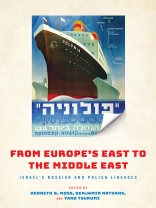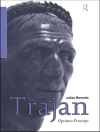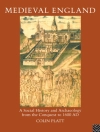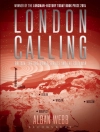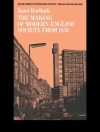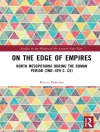The overwhelming majority of Jews who laid the foundations of the Israeli state during the first half of the twentieth century came from the Polish lands and the Russian Empire. This is a fact widely known, yet its implications for the history of Israel and the Middle East and, reciprocally, for the history of what was once the demographic heartland of the Jewish diaspora remain surprisingly ill-understood.
Through fine-grained analyses of people, texts, movements, and worldviews in motion, the scholars assembled in From Europe’s East to the Middle East—hailing from Europe, Israel, Japan, and the United States—rediscover a single transnational Jewish history of surprising connections, ideological cacophony, and entangled fates. Against the view of Israel as an outpost of the West, whether as a beacon of democracy or a creation of colonialism, this volume reveals how profoundly Zionism and Israel were shaped by the assumptions of Polish nationalism, Russian radicalism, and Soviet Communism; the unique ethos of the East European intelligentsia; and the political legacies of civil and national strife in the East European ‘shatter-zone.’ Against the view that Zionism effected a complete break from the diaspora that had birthed it, the book sheds new light on the East European sources of phenomena as diverse as Zionist military culture, kibbutz socialism, and ultra-Orthodox education for girls. Finally, it reshapes our understanding of East European Jewish life, from the Tsarist Empire, to independent Poland, to the late Soviet Union. Looking past siloed histories of both Zionism and its opponents in Eastern Europe, the authors reconstruct Zionism’s transnational character, charting unexpected continuities across East European and Israeli Jewish life, and revealing how Jews in Eastern Europe grew ever more entangled with the changing realities of Jewish society in Palestine.
Inhoudsopgave
Introduction
Kenneth B. Moss, Benjamin Nathans, and Taro Tsurumi
Part I. Imperial and National Crucibles
Chapter 1. ‘Little Russia’ in Palestine? Imperial Past, National Future (1860-1948)
Israel Bartal
Chapter 2. From Hyphenated Jews to Independent Jews: The Collapse of the Russian Empire and the Change in the Relationship Between Jews and Others
Taro Tsurumi
Chapter 3. Jewish Palestine and Eastern Europe: I Am in the East and My Heart Is in the West
Anita Shapira
Chapter 4. Stateless Nation: A Reciprocal Motif Between Polish Nationalism and Zionism
Marcos Silber
Part II. Groups and Institutions
Chapter 5. The Paradox of Soviet Influence: The Case of Kibbutz Ha-Shomer Ha-Tsa’ir from the USSR
Ziva Galili
Chapter 6. Triumphs of Conservatism: Beit Yaakov and the Polish Origins of Haredi Girls’ Education in Israel
Iris Brown (Hoizman)
Chapter 7. Hasidic Leadership: From Charismatic to Hereditary and Back
Benjamin Brown
Chapter 8. Connecting Poland and Palestine: The Organizational Model of He-Haluts
Rona Yona
Part III. Formations of Political Culture
Chapter 9. Israel’s Polish Heritage
David Engel
Chapter 10. Violence as Political Experience among Jewish Youth in Interwar Poland
Kamil Kijek
Chapter 11. From Zionism as Ideology to the Yishuv as Fact: Polish Jewish Reorientations Toward Palestine Within and Beyond Zionism, 1927-1932
Kenneth B. Moss
Chapter 12. Hero Shtetls: Reading Civil War Self-Defense in the Yishuv
Mihály Kálmán
Part IV. Soviet Interludes
Chapter 13. American Jews and the Zionist Movements in the Soviet Union: The Joint and He-Haluts in Crimea in the 1920s
Chizuko Takao
Chapter 14. Refuseniks and Rights Defenders: Jews and the Soviet Dissident Movement
Benjamin Nathans
List of Contributors
Index
Acknowledgments
Over de auteur
Kenneth B. Moss is Felix Posen Professor of Modern Jewish History at Johns Hopkins University. Benjamin Nathans is Alan Charles Kors Associate Professor of History at the University of Pennsylvania. Taro Tsurumi is Associate Professor in the Department of Area Studies at the University of Tokyo.
